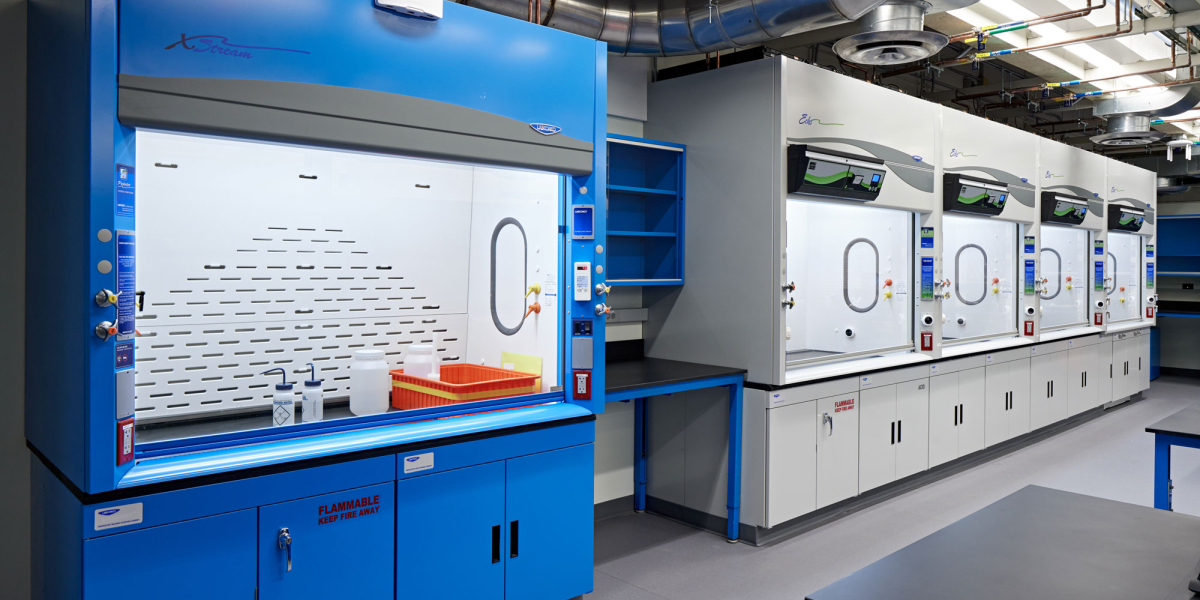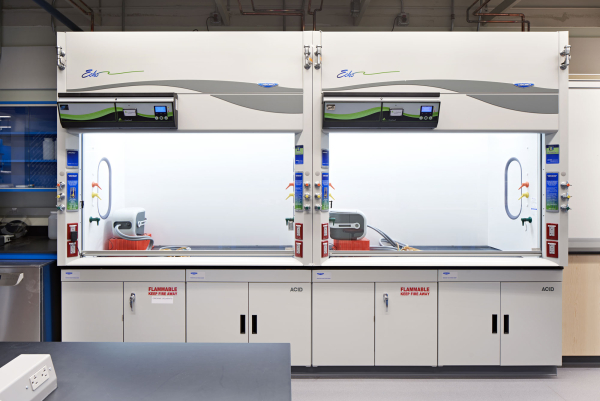Wellesley College eyes LEED with Labconco

In 2018, Wellesley College announced plans for renovating and expanding their entire Science Hill complex. A big part of this involved the Science Center. The Science Center was “the largest consumer of energy on campus by far” according to the Fall 2018 issue of Wellesley Magazine.
As Wellesley created the design criteria, the environment was a key concern. Science Hill was built within nature – choosing to incorporate the natural landscape rather than build over it. Not only do they want to protect their local landscape, but also the global environment, by being good stewards of their sustainability and climate impact. In 2019, Wellesley earned a gold Sustainability Tracking, Assessment & Rating System (STARS) rating from the Association for the Advancement of Sustainability in Higher Education (AASHE) for sustainability. Wellesley was very interested in making the Science Center more sustainable and energy efficient to maintain and potentially improve their STARS rating.
Per a June 18, 2019 news story on wellesley.edu: “‘Wellesley has always been committed to being a force for good in the world,’ said Wellesley College president Paula A. Johnson. ‘There is no more powerful expression of this than building a sustainable future. We are thrilled to receive the STARS Gold Rating and pledge to keep moving forward.’”
They went as far as upgrading the materials of the entire building with more durable window framing and glass instead of fiberglass. When it came to the L and E wings, which house chemistry, biology, and ecology departments, among others, they were completely renovated and this included all new chemistry and research laboratories.
Wellesley wanted to extend their energy efficiency to as many aspects of the project as possible. Per the Fall 2018 issue of Wellesley Magazine, Wellesley College filed for LEED gold certification for the building once it is complete, and those close to the project at Wellesley hope it will exceed those standards.
Furthermore, because this was going to be a multi-year project, the laboratories needed to be flexible to minimize disruption to students. Modular laboratories or swing spaces can be difficult in particular because of the need for ducting to the exterior that is required for traditional fume hoods.

Many architects, engineers, contractors, and project managers worked together and came up with a solution: Labconco Echo™ Filtered Fume Hoods. Because they use a comprehensive filter from Erlab®, these hoods don’t require ducting outside. This allowed Wellesley to install the hoods in their modular labs and continue chemistry and biology classes, as well as some faculty research, during construction. Once the L wing was complete, the Echo Filtered Hoods were moved from the temporary labs into their permanent home.
The desire for energy efficiency and safety was a big factor in choosing VAV controls with the most energy efficient fume hood in the world: Protector® XStream® by Labconco. Specialized design factors provide advantages in fume hood containment and conditioned air consumption reduction, both important aspects for Wellesley College’s new Science Center.
Protector XStream hoods reduce energy consumption by over 40% compared to conventional fume hoods and as much as 15% compared to other high-performance hood options. Protector Echo Filtered hoods have essentially 0 CFM because they don’t require make up air. On average, this saves more than $6,000 each year compared to a standard VAV ducted hood. Combining the energy savings of the Protector XStream and Protector Echo hoods helped Wellesley College in their efforts towards campus sustainability.
Wellesley’s hoods in the old Science Center were the traditional “Wellesley Blue” and it was important to them that this be continued with the new ducted hoods. Labconco matched the color from paint samples from their existing steel tables and casework that was being reused in the renovation. These contrasted the filtered hoods which are Labconco’s glacier white. Everyone involved thought the contrast in color between the filtered Hoods and ducted hoods was a great idea. Students would be trained to understand the difference between the two hood types. In the teaching labs, the blue hoods contain the hazardous bins.
The overall Wellesley College project consisted of Echo Filtered Fume Hoods and XStream Ducted Fume Hoods for the multi-phase renovation and new Wellesley College Science Center.
The Project Managers from Wellesley, instructors and students are very pleased with the filtered hoods and ducted hoods. They love the design and safety features. They are all proud of the improvements. And with the energy savings of the new hoods, along with the more sustainable materials and upgrades, they were able to gain points toward LEED certification.
Find out more about how Labconco’s green initiatives can improve your laboratory design project.
| chevron_left | How to select the right fume hood sash glass (video comparison) | Articles | Sustainability is key for Olathe Environmental Lab | chevron_right |





